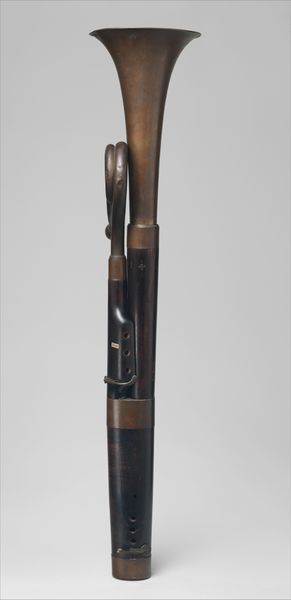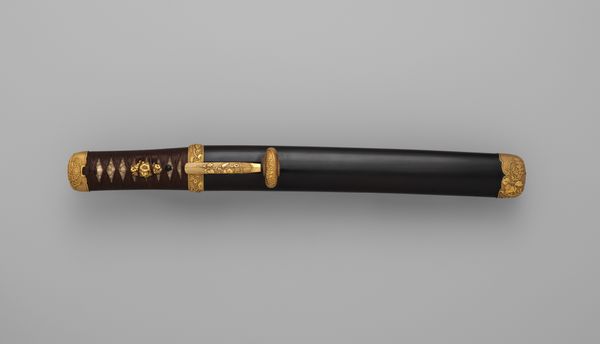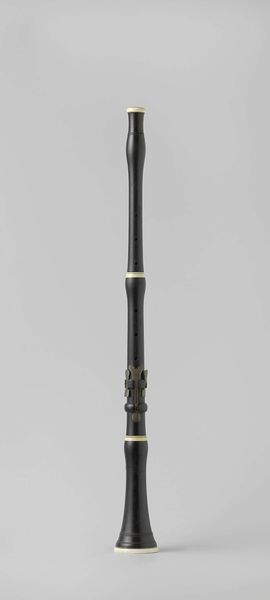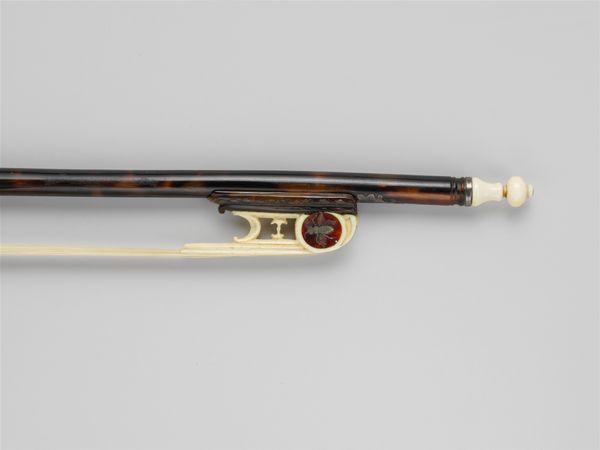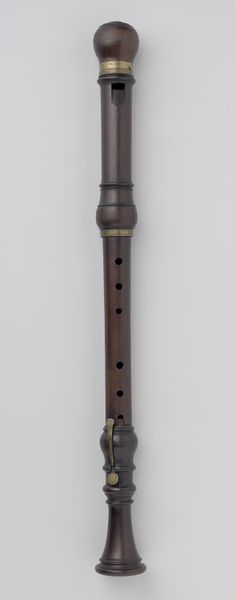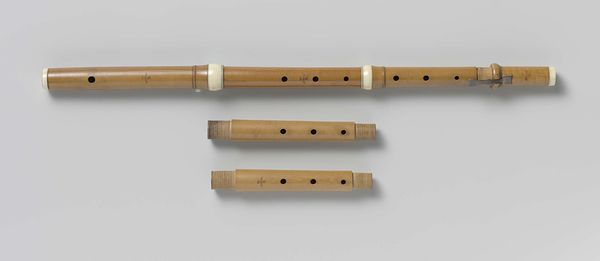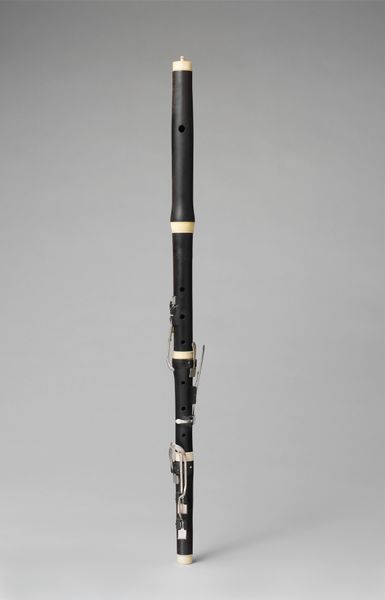
wood
#
neoclacissism
#
wood
#
musical-instrument
Dimensions: height 50.0 cm, diameter 3.0 cm
Copyright: Rijks Museum: Open Domain
Curator: What a striking ebony color and utterly simple design. Editor: Yes, this wooden flute dating from around 1780 to 1800 by Imandt presents a compelling blend of utility and refined elegance. Curator: It certainly does. Notice the elegant restraint of the Neoclassical movement in the simple cylindrical shape, stark contrasting with the bright ivory rings along the otherwise plain, dark body. It's about precision and clear structure; quite unlike the Baroque ornamentation before it. Editor: Exactly. I am wondering what types of wood crafting would have been utilized during the Neoclassical era to emphasize not just functionality, but also social consumption? And how were these processes of woodworking changed as we began moving into more industrialized methods? This object speaks to an era on the brink of transition. Curator: Your mention of a threshold reminds me—formally, each key, ring, and opening punctuates the linearity of the form, guiding the eye rhythmically from end to end. These create the illusion of an open structure that, when juxtaposed to the material presence of the ebony flute, generates an intriguing tension between transparency and opacity. Editor: Indeed. The labor required to refine raw wood into something so smoothly refined speaks to specific systems of labor and value judgments inherent to the object that must have carried their own significance for contemporary society. Curator: These judgments and considerations of the era definitely reflect those inherent classical structures that make this object stand out, especially when placed into context of a more ornamental, frivolous era preceding it. It allows us a look into society’s preferences. Editor: For me, understanding the socio-historical lens really invites a deeper engagement with the work; the conditions of its making enrich my experience of viewing its final form, far beyond what’s at surface level. Curator: Agreed; observing art via various methodologies is one reason it has been collected and appreciated for centuries!
Comments
No comments
Be the first to comment and join the conversation on the ultimate creative platform.


